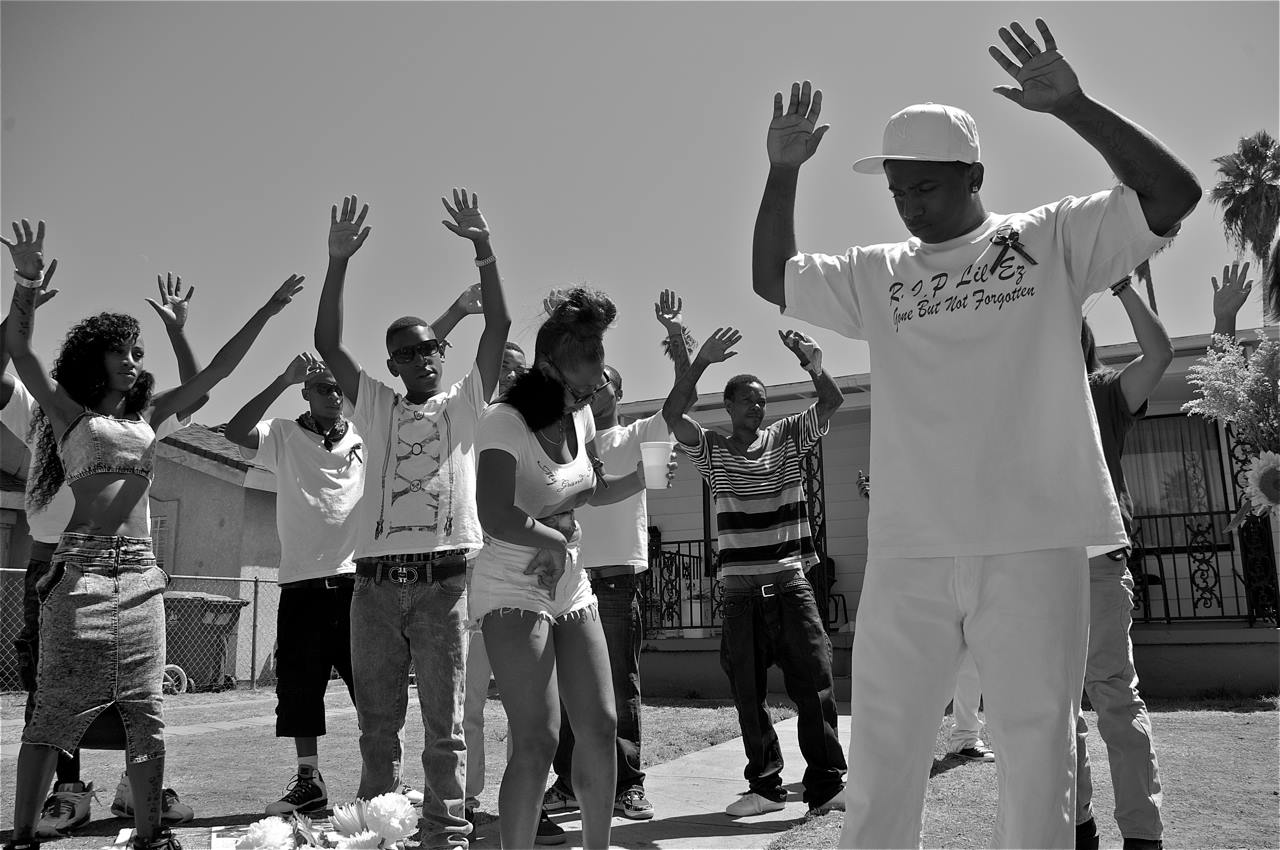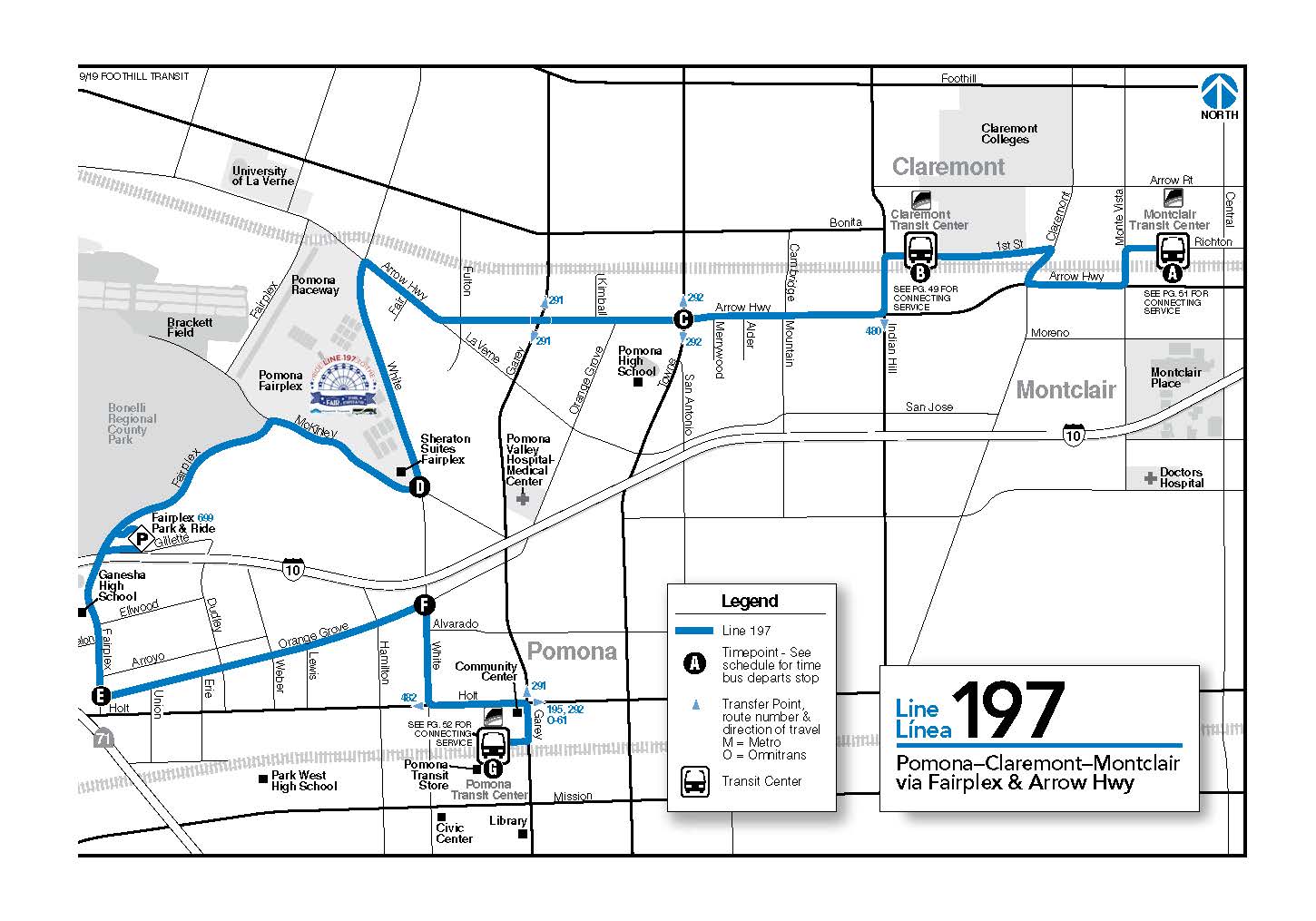Friday Ruminations on Profiling, Policing, and Planning
3:57 PM PST on March 3, 2017

Ceebo Tha Rapper shoots a video near 65th and Broadway, where 25-year-old Ezell Ford was shot and killed by the police, answering critics that thought his first video called for violence against the police. Sahra Sulaiman/Streetsblog L.A.
A couple of articles popping up in my social media feeds this week served as yet one more reminder of the importance of baking race, class, immigration status, and community relationships (particularly those with law enforcement) into mobility planning processes. One detailed the arrest of a father of four by immigration officials (dressed like police, not ICE agents) while he was dropping his children off at school. The other, an article by researcher Charles Brown and equity writer Stefani Cox, explored the prevalence of racial profiling of black and Latino cyclists - one of several "silent" barriers Brown and fellow researcher James Sinclair have detailed in their work.
Both stories highlight the unique vulnerability of people of color - particularly men of color - in the public space and remind planners and advocates that it is really hard for people to "reclaim" their streets and public spaces if trying to do so puts them in peril.
And both point to the fact that law enforcement has long been a partner in planning - identifying, isolating, and removing perceived "threats" to the safety and integrity of facilities, spaces, and communities planners have worked so hard to "improve."
Sometimes that partnership is more overt. Case in point, Metro just recently approved a new policing contract promising "more security for less dollars" on its rapidly expanding (well, at least rail is expanding) transit system.
For all of those riders of choice who cite fear as a reason they're reluctant to ride transit, that is probably welcome news. But for the transit-dependent riders, particularly the low-income black men who comprise a disproportionately high numbers of the citations and arrests on transit, the lack of discussion around the L.A. County Sheriff's Department's history of abuse of their fare-checking mandate had to be deeply disheartening.
Of perhaps even greater concern was the fact that, instead of a conversation about what "more security" for all of Metro's riders would look like in practice, Metro boardmember Ara Najarian asked what had to be done to make law enforcement officers feel safer. Citing the video of an off-duty officer in Anaheim wrestling with a youth, flashing his gun and then firing it to scare the kid and his friends, Najarian said,
It's important to look at the side of the officers and the deputies - from all of your agencies. I want to make sure...that none of [the officers] feel vulnerable, alone, isolated...We've seen in the news...how a single police officer can be hounded by a group of young kids and feel very threatened in his actions. So, I'm hoping that we don't create that sort of situation and that all of our [law enforcement] agencies feel supported and [have] the ability to reach out in case incidents arise.
While it is true that officers should feel safe and supported in their work, the suggestion that that work might entail power-tripping, harassing, threatening, and ultimately firing a weapon at a group of youths of color indicates we haven't had a robust enough discussion with law enforcement about how we're defining "security," whose security we're referring to, or what it means to create a safe environment.
In the planning of things like bike infrastructure projects, on the other hand, law enforcement is rarely at the table, but their participation is implied.
Take the planning for Metro's Rail-to-River project - a bike and pedestrian path that will cut through South and Southeast Los Angeles along the Slauson corridor's rail right-of-way, for example.
When law enforcement has come up, it has been in relation to the desire of some to see cameras installed to deter crime. I believe Metro and the project design team will also be meeting with relevant agencies like the LAPD and the fire department about safety issues and path access for those agencies in the near future.
Aside from this, however, there has been no discussion of how we (the members of the Community Advisory Committee for the project; myself included) conceptualize the role law enforcement will play in making the path welcome for all users.
Considering the project is intended to serve a majority low-income, majority black and brown community where racial profiling and harassment by law enforcement constitute some of the greatest barriers to public space access for those residents, that seems like an oversight.
Brown and Sinclair's findings suggest that cyclists of color will adjust their routes or avoid cycling altogether if they believe they are likely to be targeted for profiling. I've observed some of the same behavior here - youth might avoid riding alone (preferring club-type group rides led by older cyclists), avoid riding at certain times of the day, or avoid using bike facilities they perceive as setting them up as easy prey or as being for a community other than their own (e.g. when bike lanes seem to be a signifier of gentrification). Others, having fewer choices about how they get around or which streets they use, may use the facilities but with some trepidation, especially if they are targeted by law enforcement while using them. Which they often are, according to the countless men of color who have told me they would enjoy bike facilities a whole lot more if they were just allowed to get where they were going in peace for once.
We can't just assume that law enforcement already patrolling an area will know how to make new facilities feel safe and secure for all, in other words. Especially in a community like South L.A.
The question that leaves me with is how to bring law enforcement into the conversation. Where do they fit into the planning process? And will their engagement in the planning process actually yield the kind of results we need - namely a foundation of trust between officers and black and brown residents upon which a better relationship can be built?
I don't know.
And I have my doubts about the power of bringing a liaison officer into the process to help open a channel of communication. Officers that act as liaisons tend to be folks who genuinely care about community engagement - they're not the ones who need to be convinced that treating communities with greater respect makes things better for everyone. Nor do they have a lot of power in ensuring that their fellow officers behave accordingly.
But when we're only about a year away from a groundbreaking on a six-plus-mile path to encourage residents to bike, jog, walk, and skate their way across so many communities within South L.A., it seems foolish to not build some sort of relationship between law enforcement, advocates working on the project, and those residents that would potentially use it. If for no other reasons than to familiarize officers with the kinds of uses and users we expect to see along the path, to keep abreast of the range of ongoing encounters between cyclists, pedestrians, and officers to help ease tensions and build trust as the project moves toward completion, and to consider potential trust-building programming options with law enforcement after the path is open.
Implicitly or explicitly, police are always part of planning. Cities have expectations about what it means to have a "safe" and "welcoming" public space and police play a huge role in helping cities enforce that vision.
In not taking the time to engage what we mean by "safe" and "welcoming," whom we are protecting, what threats we are protecting them from, or how we expect to achieve that safer environment, we are essentially allowing the status quo to go unchallenged.
In this unique political moment - when the public space feels a little more fraught than usual for folks of color, when it has proven tangibly more hostile to some, and when (if our orange overlord follows through on his promises) law enforcement will not only be made more robust but also harder to hold accountable for injustices committed against communities of color - that is unacceptable.
Sahra is Communities Editor for Streetsblog L.A., covering the intersection of mobility with race, class, history, representation, policing, housing, health, culture, community, and access to the public space in Boyle Heights and South Central Los Angeles.
Stay in touch
Sign up for our free newsletter
More from Streetsblog Los Angeles
No, L.A. City Does Not Always Add Required ADA Ramps During Resurfacing, But They Should
StreetsLA GM Keith Mozee "Any time we do street resurfacing, it is considered an alteration, which requires ADA ramps to be installed."
LAPD Was Crossing Against Red Light in Crash that Killed Pedestrian and Injured Six in Hollywood
The department says the officers had turned on their lights and sirens just before crossing, but won't say why they did so.




